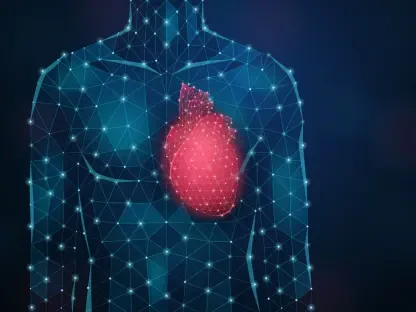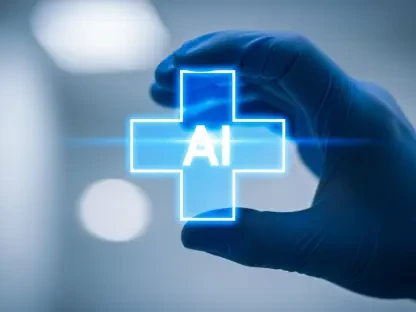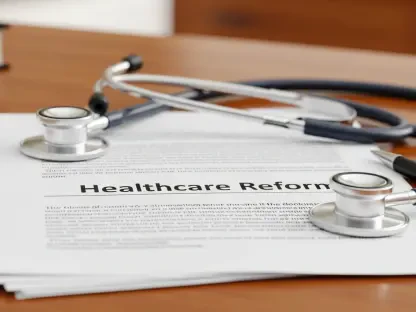In a nation where healthcare demands often outstrip resources, consider the staggering reality that 1 in 10 patients globally faces harm in medical settings, with half of these incidents preventable, according to the World Health Organization. India, with its vast population and diverse healthcare challenges, stands at a critical juncture where technology can bridge this gap. Real-time healthcare analytics and business intelligence (BI) tools are emerging as game-changers, offering the potential to shift from reactive interventions to proactive, data-driven care. This review dives into how these technologies are reshaping India’s healthcare landscape, enhancing patient safety, and optimizing operations amid ambitious digital health initiatives.
Understanding the Rise of Real-Time Analytics in Healthcare
Real-time healthcare analytics involves the immediate processing and analysis of data to inform clinical and administrative decisions as events unfold. In India, this technology is gaining traction through frameworks like the Ayushman Bharat Digital Mission (ABDM), which has already created millions of digital health IDs to streamline patient data access. These tools rely on live data streams from electronic health records (EHRs), wearables, and hospital systems to provide instant insights, moving beyond outdated, retrospective analysis to enable timely action in critical situations.
The significance of this shift cannot be overstated, especially in a country where healthcare disparities between urban and rural areas persist. BI tools complement analytics by offering dashboards and visualizations that simplify complex data for hospital administrators and clinicians alike. This synergy is pivotal in transforming how healthcare providers anticipate patient needs, allocate resources, and improve outcomes, aligning with global trends toward preventive care models.
Key Features and Performance Metrics
Seamless Data Integration via EHRs
At the heart of real-time analytics lies the integration of EHRs, which serve as a digital repository of patient information accessible across interconnected systems. In India, initiatives under ABDM promote interoperability, ensuring that data from disparate sources—be it government clinics or private hospitals—can be aggregated seamlessly. This connectivity empowers healthcare providers with a holistic view of patient histories, reducing diagnostic delays and enhancing decision-making at the point of care.
Performance-wise, hospitals leveraging integrated EHRs report significant improvements in clinical efficiency. For instance, real-time access to lab results and treatment records minimizes redundant tests, cutting costs and expediting care delivery. This infrastructure is particularly vital in emergencies, where every second counts, and fragmented data can lead to life-threatening oversights.
Predictive Analytics for Proactive Interventions
Predictive analytics stands out as a cornerstone feature, using algorithms to forecast potential health risks before they manifest. By analyzing patterns in patient data, these tools can flag issues like medication errors or infection outbreaks, directly impacting patient safety. In Indian tertiary hospitals, such systems have demonstrated measurable success in reducing adverse events, aligning with global benchmarks for preventable harm reduction.
The performance of predictive models is often gauged by metrics such as accuracy in risk stratification and the speed of alerts delivered to medical teams. Real-world applications include identifying high-risk patients in intensive care units (ICUs) and enabling preemptive measures, thereby lowering mortality rates. This capability marks a profound leap toward anticipatory care, especially in resource-constrained settings where early intervention is critical.
Innovations Driving India’s Health-Tech Ecosystem
India’s healthcare sector is witnessing a surge of innovation in real-time analytics, fueled by advancements in artificial intelligence (AI) and data management. AI-powered tools, for instance, are being deployed to track antibiotic resistance patterns, allowing for rapid response to public health threats. Additionally, the adoption of data lakes—centralized repositories for vast, unstructured datasets—enhances the scalability of analytics platforms across diverse healthcare environments.
Another notable trend is the expansion of open digital health stacks, encouraged by national policies, which enable private and public institutions to develop modular BI solutions. These innovations are not just technological but systemic, fostering collaboration between stakeholders to address unique challenges like inventory shortages during crises. The dynamic growth in this space signals a robust foundation for sustained digital transformation.
The private sector’s role is equally compelling, with investments pouring into secure, user-friendly platforms that prioritize data privacy. From urban multispecialty hospitals to rural health centers, the gradual adoption of these tools reflects a broader commitment to modernizing healthcare delivery. This momentum underscores India’s position as a potential leader in global health-tech advancements over the coming years.
Practical Impacts Across Healthcare Settings
In practical terms, real-time analytics is revolutionizing how Indian hospitals operate, from reducing patient wait times to optimizing resource use. BI-driven scheduling tools, for example, analyze historical and live data to predict patient inflows, enabling facilities to adjust staffing dynamically. This has led to shorter waiting periods in both government and private hospitals, directly enhancing patient satisfaction.
Beyond scheduling, live monitoring systems have proven invaluable in critical care and emergency management. Dashboards tracking ICU occupancy and oxygen availability became lifelines during public health emergencies like the COVID-19 pandemic, ensuring efficient allocation during peak demand. Such applications highlight the tangible benefits of analytics in addressing systemic bottlenecks.
Unique implementations, such as outpatient tracking through Health Information Management Systems (HIMS), further illustrate the versatility of these tools. Deployed in numerous government facilities, HIMS provides real-time insights into clinic loads, curbing overcrowding and improving access to care. These case studies collectively demonstrate how data-driven approaches are elevating both patient experiences and operational resilience.
Barriers to Widespread Adoption
Despite the promise, several hurdles impede the full-scale adoption of real-time analytics in India. Technical challenges, such as inconsistent data entry and reliance on fragmented legacy systems, often undermine the reliability of insights. These issues are particularly pronounced in under-resourced rural facilities, where digital infrastructure lags behind urban counterparts.
Regulatory and privacy concerns also pose significant obstacles, as the handling of sensitive patient data demands stringent governance. Ensuring compliance with national standards while maintaining public trust requires robust frameworks, a process still in development. Market disparities exacerbate the challenge, with smaller hospitals struggling to afford or implement advanced BI solutions compared to well-funded urban centers.
Efforts to address these barriers are underway, with training programs for healthcare staff and policy initiatives under ABDM focusing on interoperability standards. While progress is evident, bridging the digital divide remains a complex endeavor, necessitating sustained investment and collaboration across sectors to ensure equitable access to these transformative technologies.
Looking Ahead: The Future of Healthcare Analytics
The trajectory of real-time healthcare analytics in India points toward a future dominated by predictive and personalized care. As AI integration deepens, the potential for early detection of chronic conditions like diabetes and hypertension grows, promising significant improvements in public health outcomes. Continuous enhancements in data quality will further refine the accuracy of these systems, amplifying their impact.
Emerging technologies, such as wearable devices feeding live data into analytics platforms, are expected to redefine patient monitoring over the next few years, from 2025 onward. This evolution could empower individuals to manage their health proactively, reducing the burden on healthcare facilities. Simultaneously, stronger digital infrastructure will likely facilitate broader adoption, even in underserved regions.
The long-term vision hinges on transforming every data point into actionable insights, fostering a healthcare ecosystem that anticipates needs rather than merely responds to them. While challenges persist, the ongoing commitment to innovation and policy support suggests that real-time analytics will play an increasingly central role in shaping India’s health landscape.
Final Thoughts on a Digital Healthcare Revolution
Reflecting on this exploration, it is clear that real-time healthcare analytics and BI tools have carved a pivotal niche in India’s medical sector, delivering measurable gains in patient safety and operational efficiency. The journey showcases remarkable strides in data integration and predictive capabilities that have begun to redefine care delivery. Yet, the path also reveals persistent gaps in accessibility and system readiness that demand attention.
Moving forward, stakeholders need to prioritize scalable solutions, channeling resources into training and infrastructure to close the urban-rural divide. Collaborative efforts between government bodies and private innovators should focus on crafting policies that balance innovation with data security. Ultimately, the next steps involve harnessing these tools not just for immediate fixes but as cornerstones of a resilient, forward-thinking healthcare system.









